Click here to go back to the Index

|
The trailboards will be laminated on each side of the bow. There will be 5 laminations: the first fore-and-aft layer will be 8mm Kauri, the middle 3 (slightly diagonal) layers will be 4mm Kaihikatea, and the final, outer fore-and-aft layer will be 8mm Kauri. The first layer will be screwed and glued to temporary battens that have been spot-glued onto the hull. The screws through the first layer will be removed before the second layer is laminated on top. |
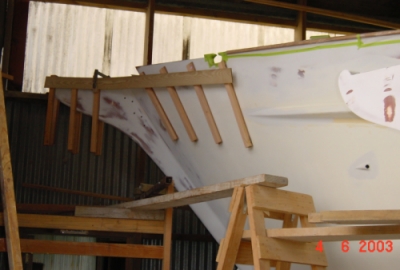 |
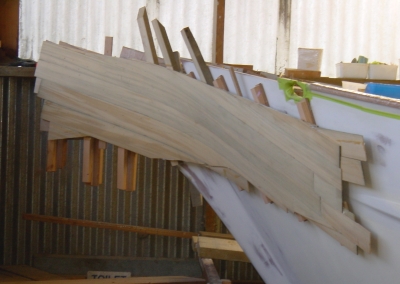 |
The final layer of Kaihikatea has been laminated, and only the final fore-and-aft Kauri lamination has yet to be applied. |
|
With the laminations complete, the trailboards were removed from the hull, together with the temporary battens. The boards were then faired up and shaped to their final form. They will now be given to a professional carver/artist for completion. Note the substantial aluminium bronze head stay fitting that has now been permanently fastened to the stem. |
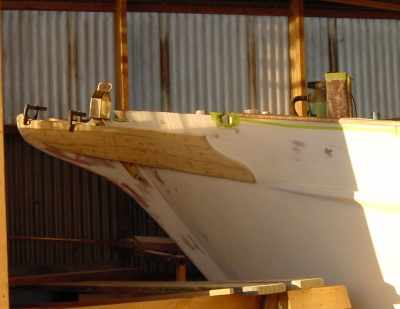 |
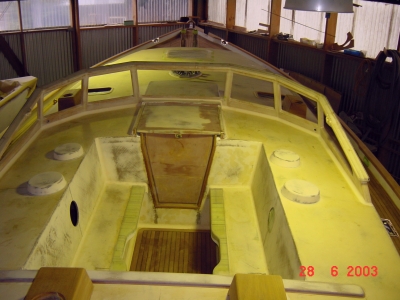 |
Construction of the main companionway sliding hatch and drop-boards has been completed, and bases for the four primary sheet winches have been bonded to the deck. Four teak dorade boxes (2 forward of the cockpit screen and 2 just visible aft of the cockpit) have been temporarily placed into position. The main mast collar, temporarily placed so that the positions of clutches and winches can be determined, is just visible on the deck forward of the main hatch garage. |
|
The helm seat has also been completed. This will have 2 hinged lids: the smaller lid on the starboard side will cover the cockpit bilge pump and shore power inlet, and the longer lid to port will cover an inflatable dingy. Note the mizzen mast base, which has been temporarily placed in order to start positioning other sailing hardware. The raised panel just aft of the cockpit will support the main sheet traveller, and the similar panel at the after end of the coach house will support the mizzen sheet traveller. The round block just forward of the mizzen traveller on the centre line is a port for our emergency tiller. |
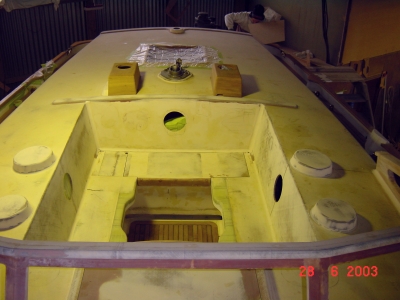 |
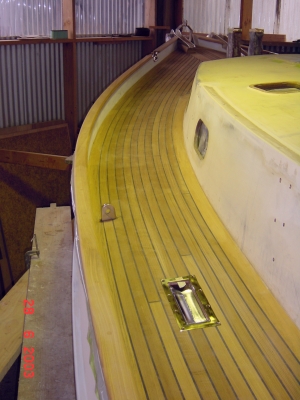 |
The teak deck and teak cap rail have been completed, and 4 deck prisms (2 on each side deck) have been dry fitted into place. One of the main mast cap-shroud chainplates can be seen on the side deck. The holes on the side of the coach house are for fastening one of the the main mast lower shroud chainplates. These chainplates will not be finally fastened to the boat until after exterior painting is completed. |
|
In this photo of the aft deck, note the open fairleads on the stern quarter and the closed fairlead in the middle of the transom. Hinges and latches have not yet been fitted to any of the deck hatches (the end of one hatch can be seen as a thin line on the deck in the foreground). |
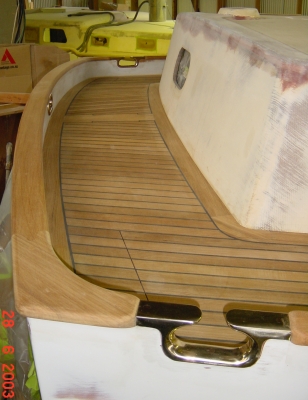 |
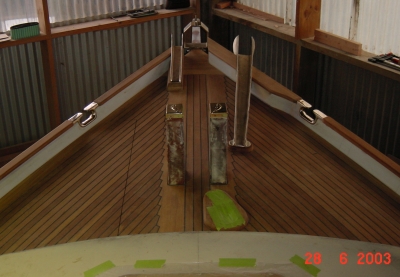 |
An "aluminium-bronze mine" on the foredeck. All of the bronze castings in this photo have been cast by local foundries, but patterned and finished in our workshop. Rollers have yet to be fitted to the large "spareman" on the starboard bow and the smaller fitting on the port side. The taped teak block in the lower foreground is the base for our windlass. |
|
Our deck organisers have been made in-house using Harken sheaves and silicon bronze plate. They are designed to be bonded down to the deck, while still allowing the sheaves to be removed for cleaning or replacement. |
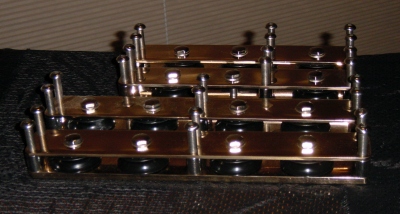 |
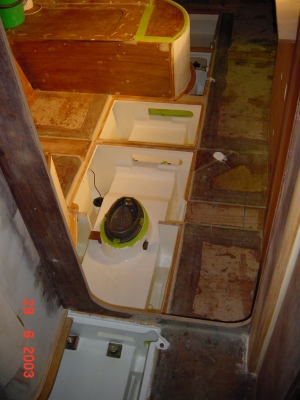 |
All of the bilges through the saloon and forward cabin have been completely painted out, and now await installation of electrical, plumbing and electronic systems. The base for the keel-stepped main mast, visible in the centre of the photo, will shortly be bonded into position on the mast step |
|
A 2 metre long solid copper strap has been fixed onto the lead ballast keel, using bronze machine screws tapped directly into the lead. This will primarily act as a lightning ground plate, but also serves to improve the single sideband ground, and provide an AC and DC electrical earth. The yacht will be fitted with an isolation transformer for its AC systems. |
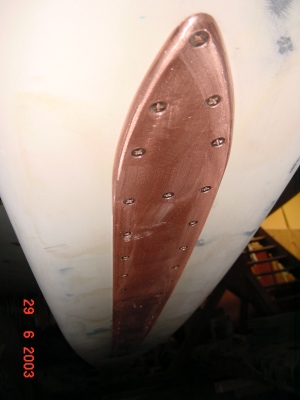 |
